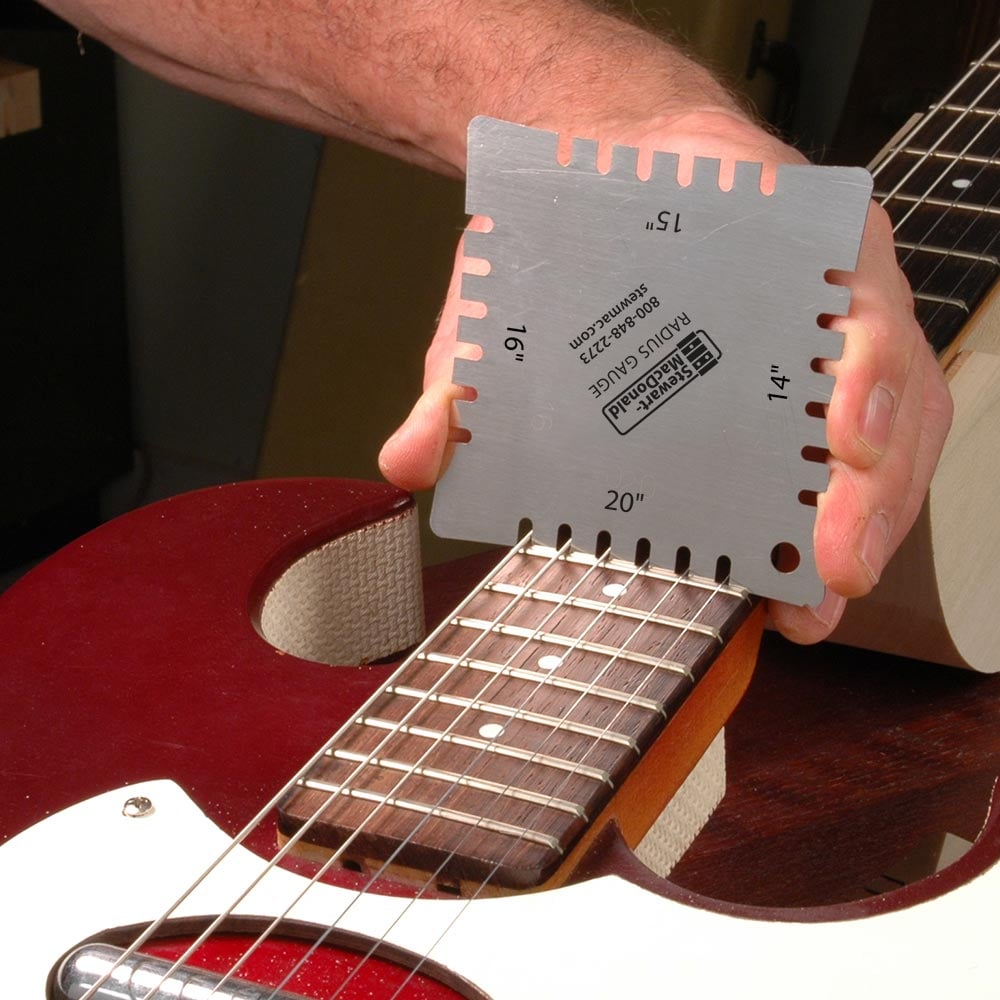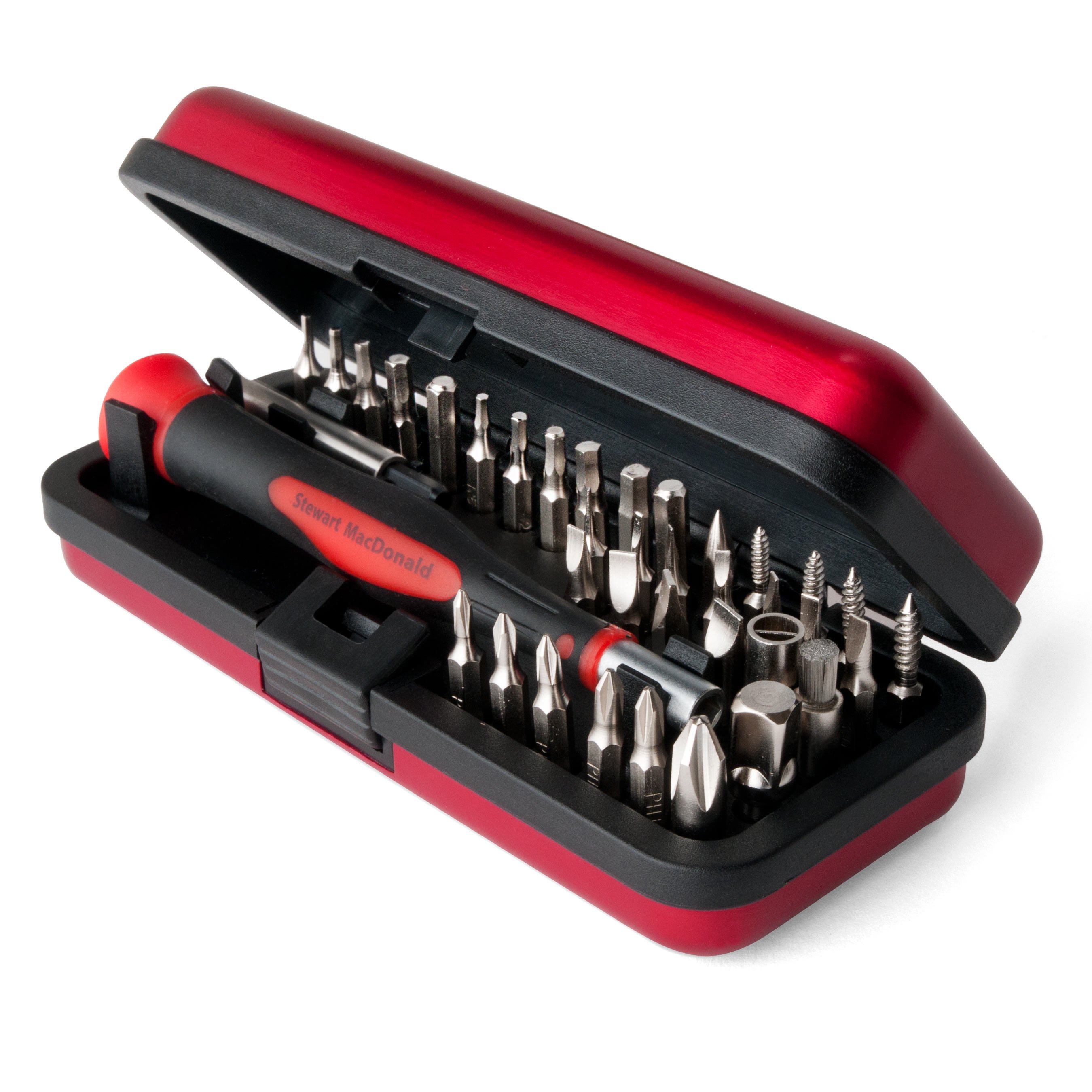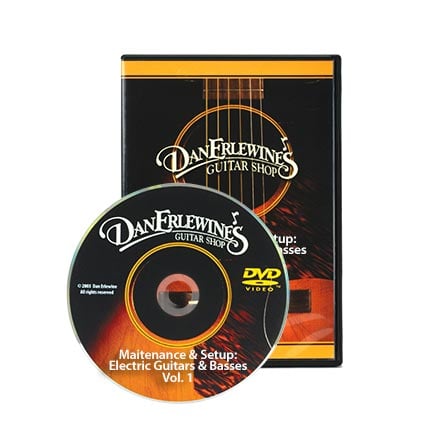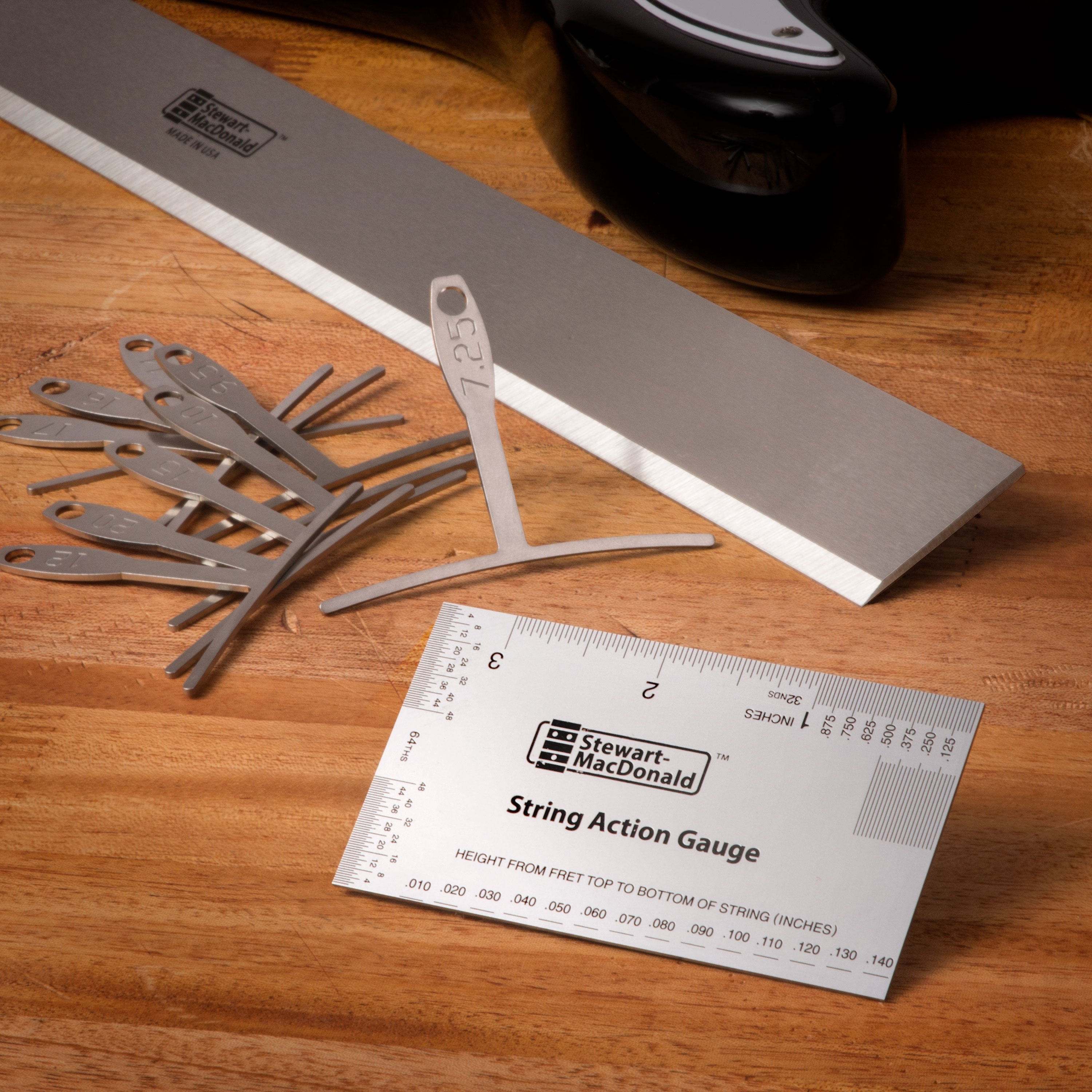Fixing fret buzz: raising the saddles
A P-Bass with fret buzz: Dan Erlewine fixes his brother’s bass, and answers the question, “To get rid of this fret buzz, should I adjust the saddles or the truss rod?”
About the guitar in this video: this is a Frankenbass, a Fender P-Bass neck from the 1980s on a shellac-finished aftermarket body.
- Adjust the saddles?
- Adjust the truss rod?
- Checking the fretboard radius on this 1980s Fender neck.
- Tip: Raising the saddles while rotating the radius.
Video Transcription
[on-screen text reads: Stewart-MacDonald Trade Secrets!
Dan Erlewine: This base has a buzz on the C note on the A string [on-screen text reads: Dan Erlewine, Stewart-MacDonald. Fixing fret buzz]. It belongs to my brother Tom. We play in a band together and he wants me to get rid of that and would like to raise the strings a little bit. And his question was, would you do that by loosening the truss rod and give it some relief? Or raising it at the bridge?
Measuring the fretboard radius
I'd start at the bridge because that's pretty easy to adjust, much easier than adjusting the neck. If I'm going to be adjusting the saddles, I want to know what the fretboard radius is [on-screen text reads: StewMac Radius Gauge] so I can match that radius and it's seven and a quarter because that's the vintage radius for a Fender. And this Under String Radius Gauge [on-screen text reads: Must-have tools for guitars - StewMac Basic Setup Kit] is a seven and a quarter. And if I come down here I can tell right away that the A string's too low because the E string is way high above the radius gates.
Adjusting the saddles
I need to pull the A string up, then probably the D string with it. I'm going to loosen the rings first, to keep the tension off those little thin screws. You want enough tension to read it with the radius gauge but you don't want to fight that with your Allen wrench. I'm just going to raise it up a bit and then tune back up and let it down. The A is where it should be and we can tune it up and see how it is.
It's still buzzy, so I'm going to raise it more. I can't raise the A string by itself because then it won't have the same radius as the others. It will feel weird. So, I'll be raising the E with it. The E, A and D, and I can leave the G alone. It's not buzzing and I can work around that G string and just pop these up.
I made a mark on my little Allen stick here, so I can do the same number of turns on each one. Starting at the E, I'll raise it, this, this, and still leave that alone and see where I'm at and check it with the gauge. It's only a little bit of adjustment to get a lot of feel in it.
What I did was set the radius at the bridge because one string was too low. When I got that, I raised the action up a little bit. But not like this, like that. It rotated around that G string.
If Tom likes the feeling of this right now, this little setup is done. And if not, then he'll be back and I'll work on the truss rod but that would be a different Trade Secret.







